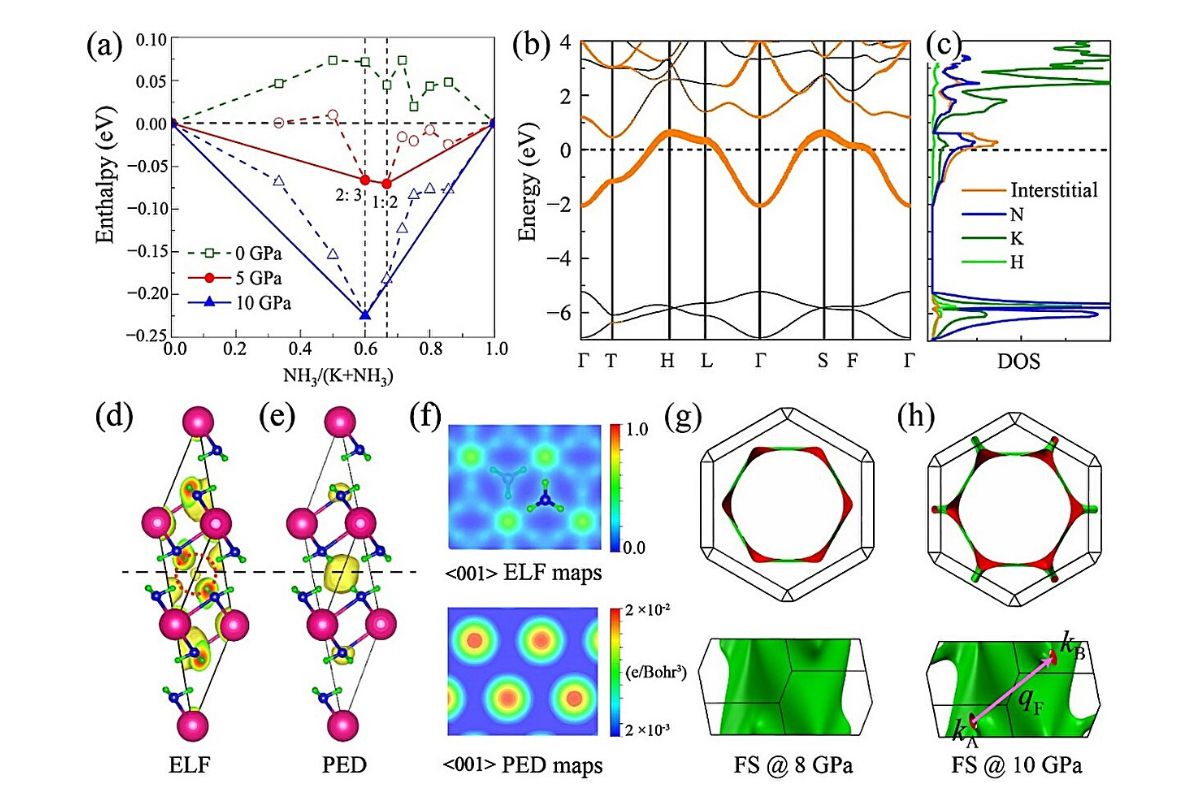
What is the Peierls Transition? The Peierls Transition is a fascinating phenomenon in solid-state physics where a one-dimensional metal becomes an insulator at low temperatures. Named after physicist Rudolf Peierls, this transition occurs because the electrons in the metal form a periodic pattern, causing the lattice to distort. This distortion opens a gap in the electronic energy levels, preventing electrons from conducting electricity. Peierls Transition plays a crucial role in understanding materials like conducting polymers and charge density waves. It helps scientists design new materials with unique electrical properties. Ready to dive deeper into this intriguing topic? Let's explore 30 facts about the Peierls Transition!
What is Peierls Transition?
Peierls Transition is a fascinating phenomenon in solid-state physics. It describes a structural phase transition in one-dimensional metals, leading to a distortion of the atomic lattice. This transition has significant implications for the electrical properties of materials.
-
Named After Rudolf Peierls: The transition is named after the physicist Rudolf Peierls, who first predicted it in 1930.
-
Occurs in One-Dimensional Metals: Peierls Transition specifically happens in one-dimensional metals, where the atomic arrangement is linear.
-
Lattice Distortion: During the transition, the atomic lattice distorts, creating a periodic modulation.
-
Energy Gap Formation: This distortion leads to the formation of an energy gap at the Fermi level, affecting the material's conductivity.
-
Temperature Dependent: The transition typically occurs at low temperatures, where thermal vibrations are minimal.
Why is Peierls Transition Important?
Understanding Peierls Transition is crucial for various applications in material science and condensed matter physics. It provides insights into the behavior of low-dimensional systems.
-
Influences Electrical Conductivity: The transition can turn a metallic conductor into an insulator by opening an energy gap.
-
Charge Density Waves: It often results in the formation of charge density waves, a periodic modulation of the electron density.
-
Superconductivity Connection: Some theories suggest a link between Peierls Transition and superconductivity in certain materials.
-
Material Design: Knowledge of this transition helps in designing new materials with specific electrical properties.
-
Quantum Mechanics: It serves as a practical example of quantum mechanical principles in action.
Examples of Peierls Transition in Materials
Several materials exhibit Peierls Transition, each providing unique insights into this phenomenon.
-
Tetrathiafulvalene-Tetracyanoquinodimethane (TTF-TCNQ): This organic conductor shows a clear Peierls Transition at low temperatures.
-
Blue Bronze (K0.3MoO3): A well-studied material that undergoes Peierls Transition, leading to charge density waves.
-
Platinum Chains: One-dimensional platinum chains also exhibit this transition, altering their electrical properties.
-
Organic Conductors: Many organic conductors display Peierls Transition, making them subjects of extensive research.
-
Transition Metal Dichalcogenides: These materials, like TaS3, show Peierls Transition, contributing to their unique properties.
How Peierls Transition is Detected
Detecting Peierls Transition involves various experimental techniques that reveal changes in the material's properties.
-
X-ray Diffraction: This technique can detect lattice distortions indicative of Peierls Transition.
-
Electrical Resistivity Measurements: A sudden change in resistivity at low temperatures can signal the transition.
-
Electron Microscopy: High-resolution electron microscopy can visualize the atomic lattice distortions.
-
Spectroscopy: Techniques like Raman spectroscopy can detect changes in vibrational modes associated with the transition.
-
Magnetic Susceptibility: Changes in magnetic properties can also indicate the occurrence of Peierls Transition.
Theoretical Models of Peierls Transition
Several theoretical models explain the mechanisms behind Peierls Transition, each contributing to a deeper understanding.
-
Peierls Instability: The original model proposed by Peierls, explaining the instability of one-dimensional metals.
-
Fermi Surface Nesting: This model describes how the Fermi surface's shape leads to the transition.
-
Electron-Phonon Interaction: The interaction between electrons and lattice vibrations plays a crucial role in the transition.
-
Mean Field Theory: This approach provides a simplified model to understand the transition's thermodynamics.
-
Density Functional Theory: Advanced computational methods like DFT offer detailed insights into the transition.
Challenges and Future Directions
Research on Peierls Transition continues to evolve, with new challenges and opportunities emerging.
-
Complex Materials: Studying Peierls Transition in complex materials remains a significant challenge.
-
High-Temperature Transitions: Finding materials that exhibit Peierls Transition at higher temperatures is an ongoing research area.
-
Quantum Computing: Understanding Peierls Transition could have implications for developing quantum computing materials.
-
Nanotechnology: The transition's principles can be applied to design nanoscale devices with specific properties.
-
Interdisciplinary Research: Collaboration between physicists, chemists, and material scientists is essential for advancing knowledge in this field.
The Final Word on Peierls Transition
Peierls Transition is a fascinating phenomenon in solid-state physics. It explains how certain materials change their structure at low temperatures, leading to unique electrical properties. This transition is crucial for understanding the behavior of one-dimensional conductors and has implications for developing new materials with special electronic characteristics.
Knowing about Peierls Transition helps scientists design better semiconductors and other electronic devices. It also opens doors to exploring new materials that could revolutionize technology. Whether you're a student, a researcher, or just curious, understanding this concept can give you a deeper appreciation of the complex world of materials science.
So, next time you hear about low-temperature changes in materials, you'll know Peierls Transition is at play. Keep exploring, stay curious, and who knows? You might uncover the next big thing in material science.
Was this page helpful?
Our commitment to delivering trustworthy and engaging content is at the heart of what we do. Each fact on our site is contributed by real users like you, bringing a wealth of diverse insights and information. To ensure the highest standards of accuracy and reliability, our dedicated editors meticulously review each submission. This process guarantees that the facts we share are not only fascinating but also credible. Trust in our commitment to quality and authenticity as you explore and learn with us.
